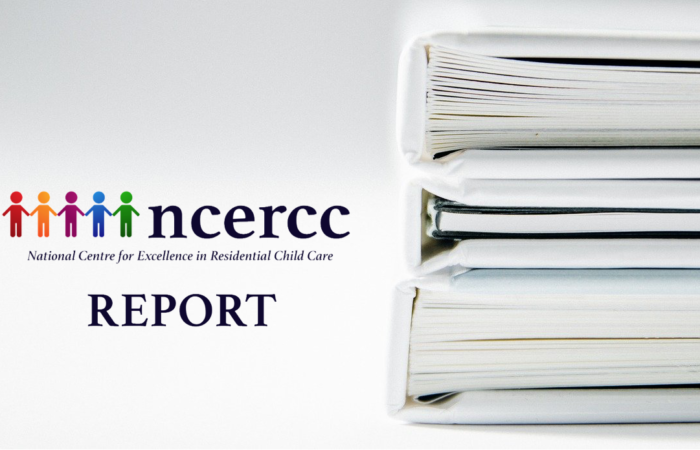
Food and Residential Child Care – Somethings to Think About When You’re Doing the Sprouts
Children, food and care
Children, food and care | Iriss
Ruth Emond, Ian McIntosh, Samantha Punch and Claire Lightowler
This Iriss Insight reviews the evidence about how food practices affect children in different care settings, drawing heavily from the experience of children in foster and residential care. However, many of the issues explored here have similarities to the experience of adults supported by social services and carers, so the Insight may also be of interest beyond those working with children.
This Insight was written by Ruth Emond, Ian McIntosh, Samantha Punch (University of Stirling) Claire Lightowler (Iriss)
Key points
- Food and routines and rituals that surround it – shopping, preparing, cooking, serving, cleaning up – are important parts of our lives, yet often we fail to recognise the symbolic or hidden meanings of these activities.
- What, where, when and with whom we eat may send all sorts of messages. Food may be used to show we care or to exercise control. This is what we mean by the symbolic meaning of food.
- Food is a powerful medium through which caring and trust can be achieved and reinforced and a sense of belonging created.
- People, particularly children, often use food as a means of exerting power and control, particularly where they feel powerless and when power is being exercised by adults outside the immediate family.
- Establishing routines such as fixed mealtimes may be seen as important elements for the creation of a ‘family-like home’.
- Tension may arise between the use of food to control children on the one hand and recognition of their growing autonomy on the other.
- Children may have to learn and adjust to new rules about food when moving from home to residential accommodation: what may be seen as playful at home may be considered as deviant or challenging in residential care, or vice versa.
Food Practices in Residential Children’s Homes: The Views and Experiences of Staff and Children A Resource Handbook for Reflection
ncercc_stirling_food_staffhandbook.pdf
The use of food and food practices in residential care in Scotland
University of Stirling (February 2012)
By Ruth Emond and Samantha Punch
Dr Ruth Emond and Dr Samantha Punch speak about a research project that they were involved in around food practices in residential children’s homes. The significance of food to both children and the adults in the home is discussed. The project involved a research fellow living alongside the children and the staff for just under a year. It also involved individual interviews and focus groups with children and staff.
They identified that food has huge significance and was used by adults and children to communicate, express and manage a range of feelings and behaviours. Interestingly staff could intend something as a caring gesture, but children could be interpreting it as quite a controlling, inflexible way of going about things. For instance, staff might think it was nice to have regular meal times where everyone came together to sit around a table, whereas the children thought that could sometimes be intimidating, having to sit with everyone when you weren’t necessarily in the mood.
There were also issues around the level of choice, sometimes children didn’t want the pressure of having to make decisions for themselves. What they wanted was staff to know how they felt about food and that they wanted it to be more flexible, to respect their privacy and enable them to make a choice about whether to participate or not. For the staff they often placed high value on routine and issues around health and safety.
One of the major findings was about the symbolism of food, so food being used as a symbol of control or of care. Food often became one way to communicate certain things that they felt they couldn’t communicate in other ways – so feelings of care, even feelings of love, belonging or togetherness. Also children sometimes showed their resistance to wider things (care, rules, expectations etc) through refusing food or to participate in activities around food.
More information on the research
Punch S, Dorrrer N, Emond R and McIntosh I (2009) Food practices in residential children’s homes: The views and experiences of staff and children (PDF), Stirling: University of Stirling.
Further resources
- Dorrer N, McIntosh I, Punch S and Emond R (2010) Children and food practices in residential care: Managing ambivalence in the institutional home,Special Edition of Children’s Geographies, 8 (3), 247-260
- Emond R, Dorrer N, Punch S and McIntosh I (2009) Children’s views on food in residential care, information leaflet for children and young people, Stirling: University of Stirling
- Emond R, McIntosh I and Punch S (In Review) Food and feelings in residential child care, submitted to the British Journal of Social Work
- McIntosh I, Punch S, Dorrer N and Emond R (2010) You don’t have to be watched to make your toast: Surveillance and food practices within residential care, Surveillance and Society,7(3), 287-300
- McIntosh I, Dorrer N, Punch S and Emond R (2011) ‘I know we can’t be a family, but as close as you can get’ Displaying families within an institutional context, in Dermott E and Seymour J (eds) Displaying family: new theoretical directions in family and intimate life, Basingstoke: Palgrave Macmillan
- Punch and McIntosh (Forthcoming) Food is a funny thing within residential childcare: Intergenerational relationships and food practices in residential care. Paper being revised for publication in Childhood.
- Punch S, McIntosh I, Emond R and Dorrer N (2009b) Food and relationships: Children’s experiences in residential care, in James, A, Kjørholt A.T. and Tingstad V.(eds) Children, food and identity in everyday life, Basingstoke: Palgrave Macmillan
- Punch S, McIntosh I and Emond R (2011) Children’s food practices in families and institutions, London: Routledge. Also published in 2010 as a Special Edition of Children’s Geographies, 8 (3), 227-232
- Punch S, McIntosh I, Emond R and Dorrer N (In Review) ‘Children, food and residential care: Ambiguities of applying rights in everyday practice, submitted toSociology.
Food in Care is a programme led by Food Active to assist children in care and their carers to lead healthier lives.
The project aims to raise the importance of food, nutrition and associated behaviours for children in care, through a range of resources and training.
Research has shown that there is a significant gap in targeted information and support for carers around promoting healthy diet and nutrition for children in care, as well as their understanding food behaviour issues.
Food in Care seeks to fill this gap, developed as part of a three year British Heart Foundation-funded project, delivered in partnership with Liverpool City Council and other local partners.
Just Published – November 2021 – Lancet series – thinking about food growth and development for emotional and cognitive capacities
Adolescent nutrition
Published: November 29, 2021
Executive Summary
Adolescence is a time of rapid changes in both physical growth and development and cognitive and emotional capacities. There rightly has been much emphasis on early childhood nutrition. However, adolescence is an additional important phase of risks and opportunities for healthy nutrition with lifelong and intergenerational consequences. Yet, this age group has been neglected in national and global plans and policies. This Series highlights the effect of nutrition on adolescent growth and development, the role the food environment has on food choices, and which strategies and interventions might lead to healthy adolescent nutrition and growth.
George C Patton, Lynnette M Neufeld, Surabhi Dogra, Edward A Frongillo, Dougal Hargreaves, Shanshan He, and others
The Lancet
Published: November 29, 2021
Series
Top of Form
Shane A Norris, Edward A Frongillo, Maureen M Black, Yanhui Dong, Caroline Fall, Michelle Lampl, and others
The Lancet
Published: November 29, 2021
Lynnette M Neufeld, Eduardo B Andrade, Ahna Ballonoff Suleiman, Mary Barker, Ty Beal, Lauren S Blum, and others
The Lancet
Published: November 29, 2021
Dougal Hargreaves, Emily Mates, Purnima Menon, Harold Alderman, Delan Devakumar, Wafai Fawzi, and others
The Lancet
Published: November 29, 2021

